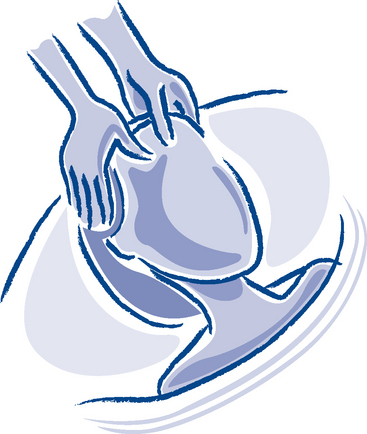6 Cleanliness
 Notes on Nursing — Florence Nightingale
Notes on Nursing — Florence Nightingale
Cleanliness of rooms and walls.
Papers, plastered, oil-painted walls.
Air can be soiled just like water. If you blow into water you will soil it with the animal matter from your breath. So it is with air. Air is always soiled in a room where walls and carpets are saturated with animal exhalations. Want of cleanliness, then, in rooms and wards, which you have to guard against, may arise in three ways.
Remedies.
The well have a curious habit of forgetting that what is to them but a trifling inconvenience, to be patiently “put up” with, is to the sick a source of suffering, delaying recovery, if not actually hastening death. The well are scarcely ever more than eight hours, at most, in the same room. Some change they can always make, if only for a few minutes. Even during the supposed eight hours, they can change their posture or their position in the room. But the sick man who never leaves his bed, who cannot change by any movement of his own his air, or his light, or his warmth; who cannot obtain quiet, or get out of the smoke, or the smell, or the dust; he is really poisoned or depressed by what is to you the merest trifle.
Ventilation and skin-cleanliness equally essential.
Steaming and rubbing the skin.
One word as to cleanliness merely as cleanliness.
Compare the dirtiness of the water in which you have washed when it is cold without soap, cold with soap, hot with soap. You will find the first has hardly removed any dirt at all, the second a little more, the third a great deal more. But hold your hand over a cup of hot water for a minute or two, and then, by merely rubbing with the finger, you will bring off flakes of dirt or dirty skin. After a vapour bath you may peel your whole self clean in this way. What I mean is, that by simply washing or sponging with water you do not really clean your skin. Take a rough towel, dip one corner in very hot water, – if a little spirit be added to it it will be more effectual, – and then rub as if you were rubbing the towel into your skin with your fingers. The black flakes which will come off will convince you that you were not clean before, however much soap and water you have used. These flakes are what require removing. And you can really keep yourself cleaner with a tumbler of hot water and a rough towel and rubbing, than with a whole apparatus of bath and soap and sponge, without rubbing.
Bathing and personal grooming •••
Most men benefit from shaving daily. If able, they usually prefer to shave themselves. The caregiver should ensure all the proper materials are available. In some cases special instructions from a health professional will need to be respected, such as the use of electric shavers rather than sharp instruments. The caregiver also needs to provide implements or help in keeping the nails and cuticles in good condition.
Stay updated, free articles. Join our Telegram channel

Full access? Get Clinical Tree



